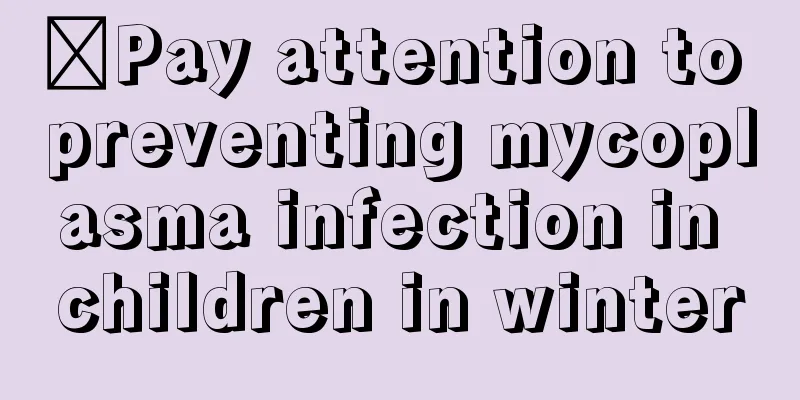What should I do if my baby keeps having hiccups?

|
Baby hiccups are a common problem for parents. Babies often hiccup because their nervous system is not fully developed, so they inhale air when breathing, causing hiccups. Although hiccups in babies are a very common phenomenon, they can also damage the baby's throat system. Therefore, if parents find that their baby is hiccuping, they must treat it in time. So, what should I do if my baby keeps having hiccups? 1. The baby will burp when he lies down after feeding. This is because when newborn babies suck milk, they suck hard and swallow too much air, causing bloating. Therefore, parents can hold the baby upright after the baby finishes drinking milk, let the baby's head rest on their shoulders, gently pat the baby's upper back with their hollow palms, hold the baby upright for half an hour, and then let the baby lie down; or parents can gently massage the baby's abdomen to help expel gas, which can also effectively prevent the baby from hiccups or milk regurgitation. 2. Parents should have the correct feeding posture, and let the baby sit diagonally on their laps to drink milk. When feeding, they should also avoid letting the baby drink too quickly or the milk is too cold or too hot. 3. Parents should not feed the baby when the baby is too hungry or crying too hard. Feeding should be done in a quiet environment. 4. You can feed your baby small amounts of milk frequently. Let your baby take a break halfway through feeding, pat your baby’s diaphragm to release the gas, and then let your baby drink the remaining milk. When your baby hiccups, you can also feed him some warm water, or use toys that interest him to attract his attention, so as to improve the hiccups. The correct way to burp a newborn 1. Hold the baby upright on the shoulders: Whether standing or sitting, the mother should hold the baby as upright as possible on the shoulders, hold the baby gently with the strength of the hands and body, and then pat the baby's upper back with the palm of the hand. 2. Sitting upright on the lap: The mother sits and lets the baby sit on her lap facing her. One hand supports the baby's head, chin and cheeks, and the other hand gently pats the baby's upper back. 3. Sideways on the thighs: The mother sits down with her legs together, and places the baby horizontally, letting him lie sideways on her legs, with the baby's head slightly facing downwards. The mother can hold the baby's lower body with one hand and gently pat the baby's upper back with the other hand. |
<<: Bronchial asthma in children
>>: How to treat amblyopia in children
Recommend
What should children eat to grow taller?
I believe that we all had such an experience when...
What will happen if children eat too many mulberries?
Mulberries actually look like a bunch of small gr...
Symptoms of arm dislocation in 3-month-old baby
Three-month-old babies are very young and are oft...
What should I do if my child has nose bleeding?
Summer is here recently, and many people will fee...
Bad breath in 10-year-old children
Children often suffer from some common medical pr...
What to do if your child has chronic sinusitis
Children are prone to various symptoms, and chron...
What to do if your child has poor liver function
If a child's liver function is not good, the ...
What is the reason why children’s urine is white?
Children's health has always been a concern f...
Warts on your child's face?
It is quite common to have warts on the face. Gen...
What are the dangers of a long fever in young children?
Many babies have a fever for a long time, which i...
What is the reason for children's large gaps between teeth?
Many children have very large gaps between their ...
Avoid these minefields when getting vaccinated, otherwise the consequences will be serious!
The health of your baby is the top priority for e...
What can a 10-year-old child eat to cure his cough quickly?
Parents are extremely anxious when their children...
What are the precautions for cutting children's hair
Although superstition is bad, all parents hope th...
Why does a child's tongue coating turn white?
I believe that every child is the hope of a famil...









